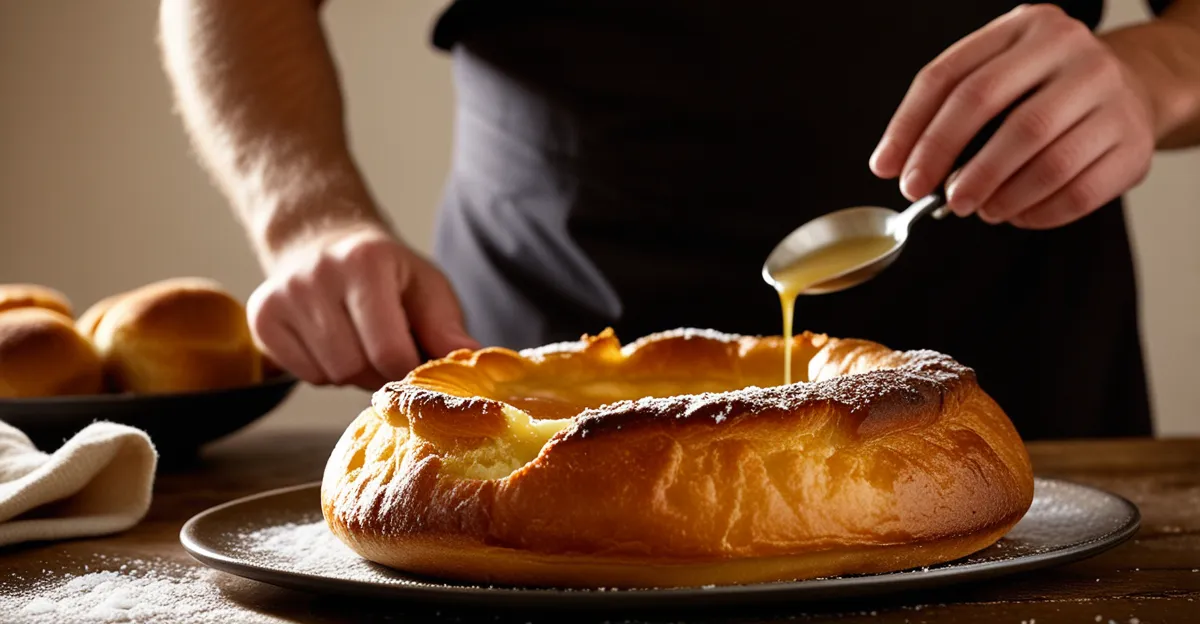Essential Ingredients and Proper Proportions
Getting the ingredient ratios right is crucial when mastering a Yorkshire pudding recipe. The classic foundation requires four key ingredients: flour, eggs, milk, and either oil or traditional beef dripping. Each plays a vital role in achieving that light and airy texture beloved by many.
Flour forms the structure, but it’s the balance with eggs and milk that ensures the batter isn’t too thick or too runny. Too much flour results in dense puddings; too little can cause the batter to collapse. Eggs provide richness and help trap air—essential for puffiness—while milk thins the batter for better rising. Using fresh, room temperature ingredients is also important, as cold components can hinder the batter’s ability to rise properly.
Also read : What are the best herbs and spices for enhancing British cuisine?
For oil or beef dripping, heating the fat until it’s smoking hot just before pouring the batter is critical. This high temperature generates the steam needed for lift. Maintaining proper proportions and fresh, balanced ingredients sets the stage for a successful, airy Yorkshire pudding every time.
Mixing and Preparing the Batter
Mixing your Yorkshire pudding batter correctly is vital for a light and airy result. Begin by whisking the flour, eggs, and milk together to form a smooth mixture. Use a vigorous but controlled whisking technique to fully combine without overmixing, which can flatten the batter by knocking out air. Achieving a lump-free batter with even consistency helps the puddings rise uniformly.
Topic to read : What techniques ensure a light and fluffy crumpet?
How long should you rest the batter before cooking? Resting the batter at room temperature for at least 30 minutes allows the flour to fully hydrate, enhancing gluten development and improving air retention during baking. Some recipes even suggest resting up to an hour or refrigerating overnight, although bringing the batter back to room temperature before baking is essential to avoid a temperature shock that could hinder rising.
Preventing lumps is simpler by gradually adding the milk to the eggs and flour while whisking continuously. This method ensures the ingredient ratios remain balanced and the batter is silky smooth, providing an ideal foundation for those perfectly puffed puddings you aim for.
Achieving the Perfect Oven Conditions
The foundation for airy Yorkshire puddings hinges on precise oven temperature and preparation. Preheating the oven to around 220°C (425°F) ensures a rapid rise by producing immediate steam as the batter hits the tin. Equally important is preheating the baking tin itself, ideally for 10-15 minutes, so it’s scorching hot when you pour in the batter. This intense heat generates the necessary steam to puff the puddings.
Choosing the correct oven temperature matters greatly. Temperatures that are too low yield puddings that spread and stay flat, while too high can burn the exterior before the inside sets. Striking the right balance supports that iconic light and airy texture.
Using hot fat — whether traditional beef dripping or vegetable oil — complements the oven’s heat. Pouring batter over smoking-hot fat sears the bottom, trapping steam inside to expand the puddings upwards. This technique maximizes rise and crispy edges, two hallmarks of a successful Yorkshire pudding recipe.
Proven Technique for Maximum Rise and Airiness
To achieve truly airy Yorkshire puddings, the cooking method is crucial. Pouring the batter directly into hot fat heated in the preheated tin produces an immediate burst of steam. This steam is essential; it creates pressure that lifts the batter rapidly, forming the characteristic puffed shape. Always use fat heated until smoking hot—whether oil or traditional beef dripping—to ensure maximum rise.
Placement of the tin in the oven also affects airiness. Position the tray on a middle or upper shelf to allow even heat circulation. Avoid opening the oven door during cooking, as sudden temperature drops cause the puddings to collapse, losing their delicate light and airy texture.
Timing is equally important. Typically, bake for 20-25 minutes without disturbance. Undercooking results in soggy centers, while overcooking dries them out and reduces rise. Mastering this cooking method balances heat, steam, and timing, delivering that sought-after fluffy, crispy Yorkshire pudding every time.
Troubleshooting Common Yorkshire Pudding Problems
When your Yorkshire pudding recipe yields dense puddings, the root cause often lies in incorrect ingredient ratios or insufficient oven heat. Dense puddings usually result from too thick a batter or using cold ingredients, which hinders the batter’s ability to rise and develop its signature light and airy texture. To fix this, always use fresh, room temperature eggs, milk, and flour to maintain proper consistency.
Flat or greasy puddings typically indicate that the fat wasn’t hot enough or that the oven temperature was too low. Ensuring the fat is smoking hot before adding the batter is crucial for steam generation, which drives the rise. If grease pools, it could mean excess fat in the tin—use just enough to coat the base.
For consistent results, avoid opening the oven door during baking to maintain steady heat. Check that your oven temperature matches the recommended 220°C (425°F) and confirm your baking tin is thoroughly preheated. These small adjustments make a significant difference in preventing common baking mistakes and achieving perfectly puffed, golden Yorkshire puddings every time.





